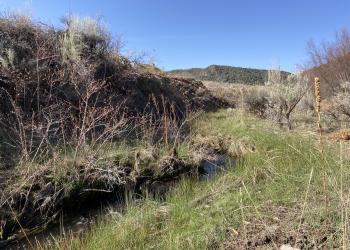Natural Resources
When the USDA Forest Service was created, there were about 760 million acres of national forest land. Today, there are nearly 750 million acres of national forest land. Sustaining the national forests during the last century while the country’s population grew by nearly 300 percent is a conservation success story.
The Forest Service celebrated its Centennial Anniversary on July 1, 2005. In the late 1890s Congress set aside selected forests and grasslands for the protection of watersheds for communities, and so that the land would be managed in perpetuity for multiple uses. In July 1905 President Theodore Roosevelt transferred the care of those forests and grasslands to the U.S. Department of Agriculture Bureau of Forestry, later renamed the Forest Service.
Since its beginning 100 years ago, the mission of the Forest Service has been tied to the relationship that Americans have with the land. It’s a relationship founded on the premise that natural resources may be used wisely while sustaining them for generations to come. In all endeavors, today’s Forest Service remains grounded in the firm belief that the outcome must serve “the greatest good of the greatest number in the long run.”
Rangeland Management/Grazing

The Forest Service has undergone many changes in its management of rangelands. In the early 1800s, free forage on unclaimed public domain lands allowed the building of cattle and sheep empires.
Timber Management and Sales

The Forest Service sells timber and special forest products on a variety of contract and permit forms based on the complexity and/or value of the sale. Guidance for the use of these forms can be found in Forest Service Handbook (FSH) 2409.18, Chapter 50, Sections 53 and 54.
For information about Wood and Christmas Tree permits visit the Dixie National Forest Permits webpage.
Land and Resource Management Plans

Dixie National Forest 1986 Land and Resource Management Plan
This Forest Plan document and amendments serve as a guide for all natural resource management activities and establishes management standards and guidelines for the Dixie National Forest. It describes resource management practices, levels of resource production and management, and the availability and suitability of lands for resource management.
These documents are pdf files that have been scanned from the original paper copies, thus they are not compliant with Section 508 of the Handicapped Accessibility Act. The original electronic documents are no longer available.
Fire and Resource Management

Wildlife Habitat Created Through Fire
Historically, fires occurred more frequently resulting in openings of grass and brush and less pinyon and juniper. Since wildfires have been actively suppressed for the past 50 to 75 years, the pinyon and junipers have expanded greatly, eliminating valuable grasses, forbs, and brush in some instances. In recent years, the Forest Service, Bureau of Land Management, and the Utah Division of Wildlife Resources, have been working cooperatively to reduce the amount of pinyon and juniper to reestablish younger stands of grass and brush. These efforts are being accomplished through the use of prescribed fires, wildland use fires, and mechanized equipment.
Ecosystem Management

In the late 1890s Congress set aside selected forests and grasslands for the protection of watersheds for communities, and so that the land would be managed in perpetuity for multiple uses. The Forest Service strives to protect the ecosystems under its management to reclaim, sustain, or enhance the health of the ecosystem as a whole. This not only benefits watersheds, but range lands, timber resources, recreational opportunities and other aspects of ecosystems.


